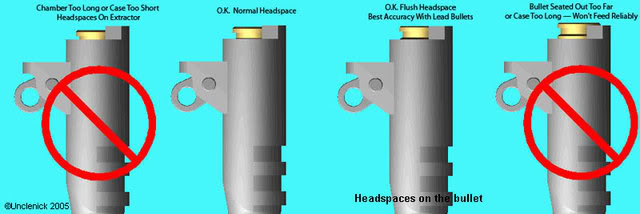I got my new lee 452-200-swc mold in today for my 45acp and after a cleaning I put it to use. I casted and lubed approx 180 boolits. I really like the mold as the bullets drop freely and believe it or not the very first boolit was a keeper. I am loading them for my 1911 and I cant get the col dialed in. I tried a COL that varied from 1.253 to 1.212. The longer would not fully chamber and I got down to a col of 1.228 before it would chamber but the front driving band had marks as though it contacted the rifling to a col of around 1.222. Anything shorter than a col of 1.228 and the nose of the boolit started getting dented and at 1.212 the round would not cycle into the chamber. I was just trying to get an idea of what others have been running this boolit at.

|
   
   
|


|



 Reply With Quote
Reply With Quote
























